This article was based on an interview with Mr Chee Meng Tan, Area Sales Director, Commercial Building Services at Grundfos
As the world accelerates into the AI-driven future, the demand for data processing power is growing exponentially. The backbone of this digital revolution—data centres—is crucial in enabling advancements in Artificial Intelligence (AI), the Internet of Things (IoT), cloud computing, and more. However, this progress comes at a significant environmental cost. Data centres are notorious for their immense energy consumption and water usage, making them prime candidates for sustainability efforts. In an era of heightened environmental consciousness, achieving sustainability in data centres is not just an option but an imperative.
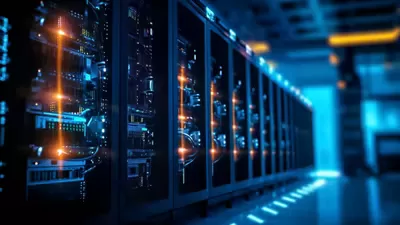
Chee Meng Tan, Area Sales Director, Commercial Building Services at Grundfos, highlights this challenge succinctly: “The efficiency of both IT hardware and cooling has been improved, and there’s a shift away from small, inefficient enterprise data centres towards more efficient cloud and hyperscale data centres.” The future of sustainability in AI must begin with reevaluating how data centres manage energy, cooling, and water resources.
Malaysia’s Emergence as a Key Market for Data Centers
In the Asia Pacific region and more specifically, Southeast Asia, Malaysia quickly has emerged as a key hub for data centre investments. With its strategic geographic location, relatively stable political environment, and competitive energy prices, Malaysia has attracted significant interest from global technology giants. Companies like Google, Microsoft, Amazon Web Services (AWS) and Meta have all made substantial investments in the region to support their growing data infrastructure needs.
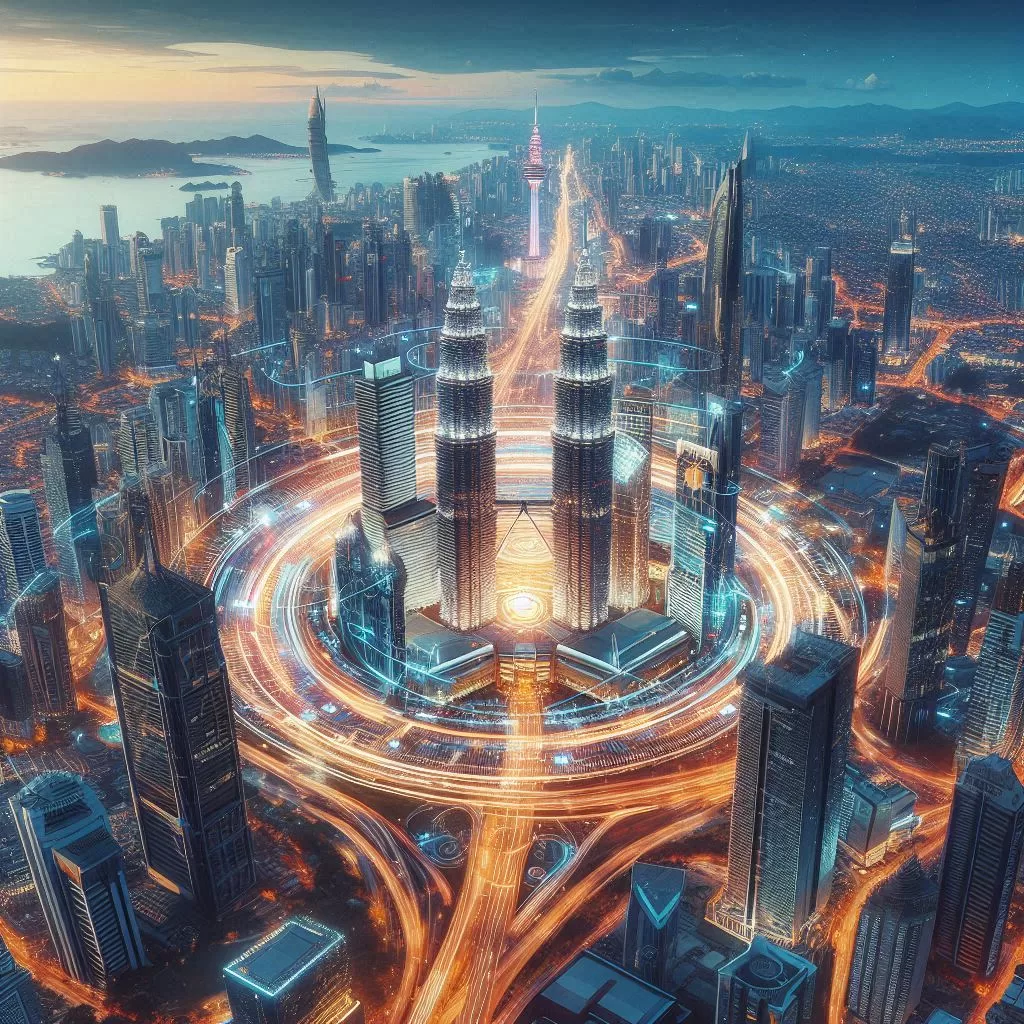
Google has set its sights on expanding its cloud operations in Malaysia as part of a broader strategy to strengthen its Southeast Asian presence by investing over USD$2 billion. Similarly, Microsoft announced plans to invest USD$2.2 billion in new data centre regions in Malaysia, signalling the country’s rising importance in the global cloud ecosystem. Meta, too, is making moves to leverage Malaysia’s infrastructure for its massive data demands, driven by the increasing reliance on cloud services and social media across the globe. The emerging importance of Malaysia as a key player couldn’t be better emphasized than with the USD$6.2 billion investment by AWS to develop and deploy its data centres in the country.
Malaysia’s government has also been keen to position the country as a leader in digital infrastructure. The recent launch of the Malaysia Digital Economy Blueprint (MyDIGITAL) sets the stage for Malaysia to become a regional digital economy leader by 2030. Part of this initiative involves accelerating the development of data centres and semiconductor fabrication, positioning Malaysia as a critical player in the Southeast Asian data economy.
However, this rapid growth brings challenges. As Tan points out, Southeast Asia’s unique climate, characterized by high temperatures and humidity, exacerbates the energy and cooling demands of data centres. “Cooling alone accounts for 35 to 40% of energy consumption in data centres in Southeast Asia—up to 10% more than the global average,” he explains.
The Energy and Water Footprint of Data Centers
Data centres are power-hungry operations. According to the International Energy Agency, the electricity demand of data centres is expected to double by 2026, driven by the rising adoption of AI and other data-intensive technologies. Cooling systems alone account for about 40% of the total energy consumption in these facilities, making it clear that any advancements in energy efficiency must begin with improvements to these systems.
Water usage is another critical challenge. Tan notes that “data centres are estimated to use more than a billion litres of water per day – equivalent to about 400 Olympic-sized swimming pools.” This consumption is expected to increase rapidly as the demand for computing power rises. The water-energy nexus—where water is required to generate energy, and energy is required to circulate water—places a double burden on data centres striving to become more sustainable.
Grundfos: Innovating for Sustainability in Data Centers
Grundfos, a global leader in pump solutions and water management, has been at the forefront of sustainability efforts within the data centre industry. By leveraging over 75 years of experience in water solutions, Grundfos is not just selling pumps; they are working with data centre designers to optimize cooling systems based on specific needs. As Tan explains, “We don’t just sell pump solutions, but work with data centre designers to optimize the design of the cooling system based on the specific needs of each data centre.”
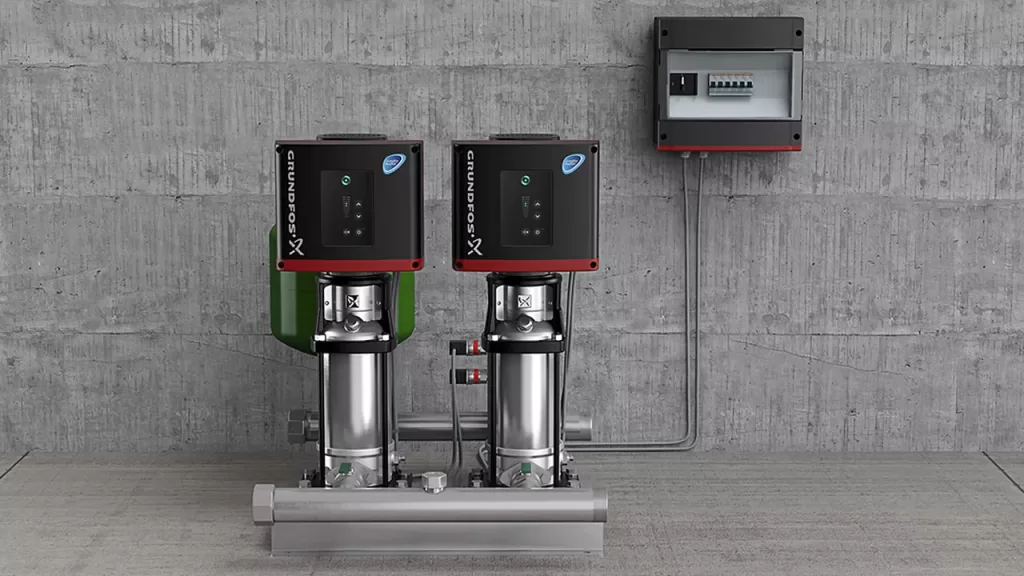
Grundfos provides tailored solutions that help data centres reduce their energy and water footprints. For instance, ensuring that pumps are properly sized for each system is critical to minimizing energy waste. “It may sound basic, but many building operators don’t get it right,” Tan points out. The right-sizing of pumps can prevent significant energy wastage and ensure that the cooling system operates efficiently.
In addition to sizing, the motors used in these pumps play a pivotal role in energy efficiency. Tan mentions that many data centres are still using outdated IE3 motors, even though more energy-efficient alternatives, such as IE5 motors, are available. “Based on our calculation, an IE5 motor can achieve 5% in energy savings as compared to an IE3 motor for 10MW data centres,” he says. These savings might seem small at first glance, but when considering the scale of energy usage in data centres, they add up to significant reductions in both energy consumption and operational costs.
AI and Machine Learning in Cooling Systems
As AI continues to develop, it is not only driving the demand for data centres but also providing the tools to make them more sustainable. One of the most exciting advancements in data centre cooling is the use of AI and machine learning to achieve real-time, on-demand cooling. Tan points to a groundbreaking example from Google: “Google reported using its DeepMind AI to reduce the electricity demand of their data centre cooling systems by 40%.”
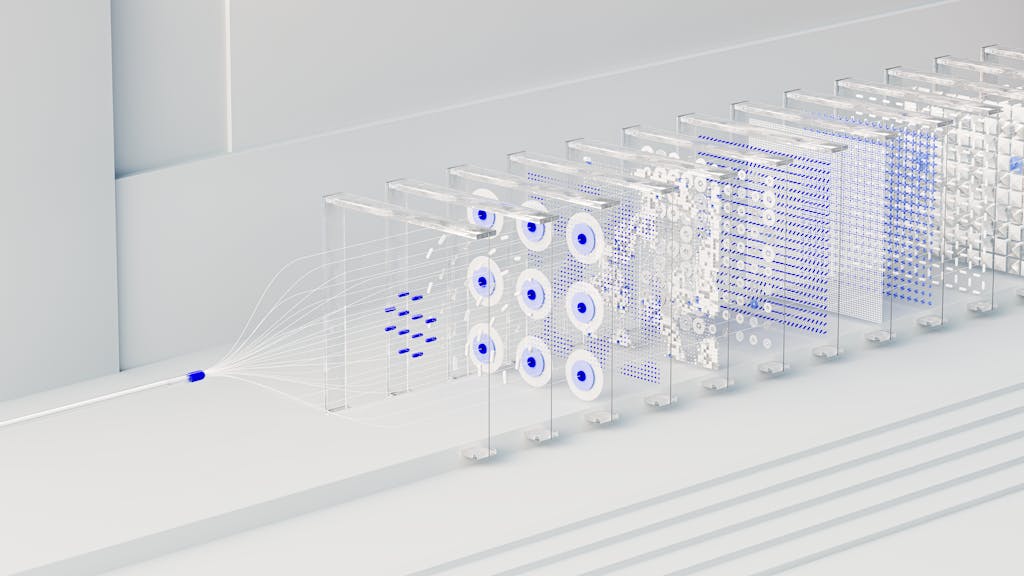
By harnessing AI to monitor temperature and cooling requirements, data centres can dynamically adjust their cooling systems to reduce energy consumption. Machine learning algorithms can analyze vast amounts of operational data to predict when and where cooling is needed, allowing the system to respond with precision, thereby optimizing energy use.
This shift toward intelligent cooling systems represents a major leap forward in the quest for sustainable data centres. AI-driven solutions not only reduce energy consumption but also extend the lifespan of equipment by preventing overheating and reducing the strain on infrastructure.
Modular and Prefabricated Solutions for Efficiency
Beyond AI, Grundfos is also pioneering modular and prefabricated solutions designed to enhance energy efficiency in data centres. Tan explains, “While not specific to data centres, the Delta Modular Systems we have developed offer various modularized standard solutions to the building services industry.” These systems are designed to optimize both the pump module’s structural design and control operations, bringing significant energy savings while reducing construction time and environmental impact.
Modular systems, particularly in cooling, are gaining traction because they allow for more tailored, needs-based cooling. Instead of relying on a centralized system, smaller cooling units can be deployed across server racks, each regulating its performance based on the needs of the corresponding rack. This not only minimizes energy usage but also ensures that each part of the data centre is cooled efficiently, without overburdening any single system.
Water Efficiency: A Key Focus for the Future
As global water security becomes an increasing concern, data centres are under pressure to reduce their water consumption. Grundfos is actively exploring alternative water sources and technologies that allow for more sustainable water management in data centres. “New technologies are being explored, such as using non-potable alternative water sources like rainwater harvesting or recycled water,” Tan explains. However, these systems require significant energy to treat the water and ensure its compatibility with the equipment used in data centres.
A holistic approach to sustainability, therefore, must include both energy and water efficiency. By integrating renewable water sources and improving the energy efficiency of water management systems, data centres can reduce their environmental impact and enhance their resilience in the face of water scarcity.
The Importance of Power Usage Effectiveness (PUE)
One of the key metrics used to measure the energy efficiency of data centres is Power Usage Effectiveness (PUE). PUE is a ratio that compares the total energy used by the data centre to the energy used by the computing equipment itself. An ideal PUE is 1.0, meaning that all energy consumed by the facility is being used for computing, with no excess energy wasted on overhead functions like cooling.

“PUE is a crucial metric for data centres,” Tan explains. “At Grundfos, our solutions are designed to achieve optimal energy efficiency, thereby reducing a data centre’s PUE.” Grundfos achieves this through three main strategies: providing reliable and efficient pumps, using digital technologies to optimize energy consumption, and offering prefabricated and modular solutions that shorten construction times and reduce environmental impact.
By focusing on reducing PUE, data centres can ensure that their energy usage is aligned with sustainability goals, while also cutting down on operational costs.
Renewable Energy Integration: The Next Step in Sustainability
Pairing energy-efficient cooling with renewable energy sources represents the next frontier for sustainable data centres. “The incorporation of renewable energy sources like solar panels or geothermal energy across operations can enable data centres to reduce reliance on fossil fuels and minimize their carbon footprint,” Tan says.
While renewable energy is often associated with variability—depending on factors like weather conditions—intelligent data insights and analytics can help overcome these challenges. By integrating renewable energy sources with advanced grid management systems, data centres can create a more resilient, sustainable energy supply that does not compromise performance.
The Road Ahead Should Be AI and Sustainability in Tandem
Looking to the future, AI is poised to play a central role in advancing sustainability efforts within the data centre industry. As Tan observes, “The rapid expansion of the AI market, which is projected to grow at a staggering annual rate of 37.3% between 2023 and 2030, is a primary driver of the rising demand for data centres.” This growth creates both opportunities and challenges: while data centres will need to expand to meet AI’s growing demands, they will also need to adopt AI-driven technologies to improve their sustainability.
In the next decade, data centres will increasingly rely on AI to optimize energy usage, predict maintenance needs, and enhance operational efficiency. These advancements will be critical in helping the industry meet global sustainability targets, such as those outlined in the Global Cooling Pledge, which aims to reduce cooling-related emissions by 68% by 2030.
Sustainable AI Starts with Data Centers
As the digital revolution continues to unfold, data centres will remain at the heart of technological progress. However, the environmental impact of these facilities cannot be ignored. As Chee Meng Tan from Grundfos emphasizes, “With a more robust approach to sustainability that considers impact across multiple touchpoints, data centres can demonstrate a strengthened commitment to the cause, which sharpens its competitive edge within the industry.”
By integrating energy-efficient technologies, adopting AI-driven cooling solutions, and exploring alternative water sources, data centres can drastically reduce their environmental footprint. The road to a sustainable AI future starts with the choices we make today, and it begins at the data centre.
This article was based on an interview with Mr Chee Meng Tan, Area Sales Director, Commercial Building Services at Grundfos
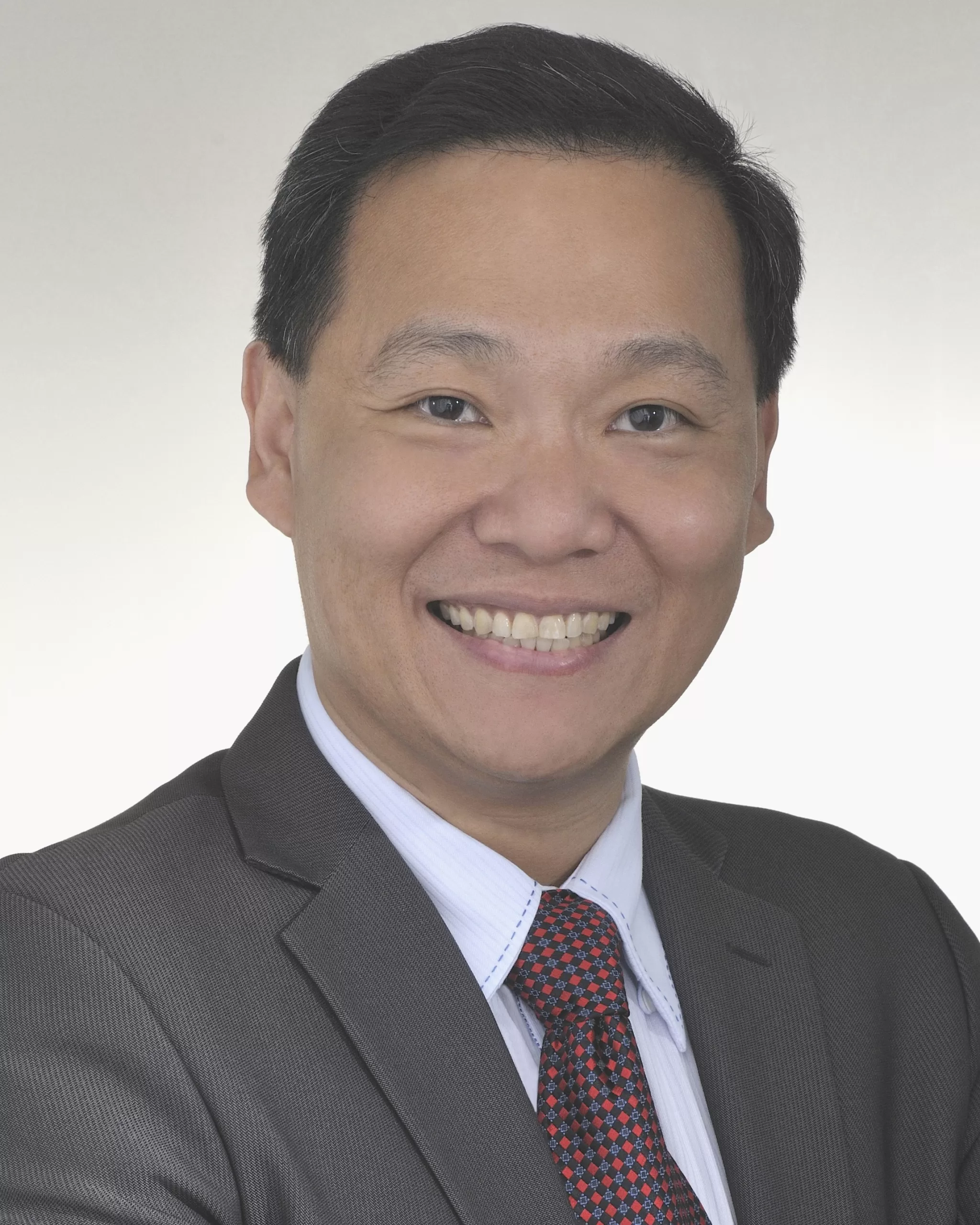
Chee Meng Tan
Area Sales Director, Commercial Building Services, Grundfos
Chee Meng Tan is currently the Area Sales Director for Grundfos’ Commercial Building Services (CBS) division, responsible for growing CBS’s presence and leadership in Southeast Asia. Apart from opening and developing regional markets and operations, his role involves the strategic formulation and operative implementation of regional sales concepts.
Chee Meng joined Grundfos Singapore in 1995 as an Application Engineer and has taken on different roles and responsibilities in the last 29 years. Prior to taking on his current role, Chee Meng has held various positions within Grundfos such as the General Manager of Grundfos Alldos (Shanghai) Water Treatment Co, Ltd, the Regional Business Director for Industry Segment in Asia Pacific, as well as the Business Director for Water Utility segment in Asia Pacific.
Chee Meng holds a Diploma in Electrical Engineering as well as Management Studies.






